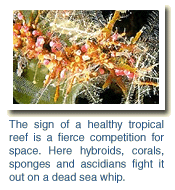

Not just one or two sites, Mabul is an entire destination of muck dives, offering the circumferences of two whole islands, Mabul itself and nearby Kapalai Island, and promising practically any tropical critter you might want to see.
Open any book on tropical fish and invertebrate marine life and you'll see practically everything you're going to see in Mabul. Not in one's or two's but in ten's and twenty's. You'll see frogfish the size of soccer balls in blue and black. Every species of pipefish known. Fire gobies, both purple and red. Mandarin fish, ghost pipefish, many species of shrimp, wild and exotic sea urchins, crabs which will blow you away and lobsters by the dozens. Mabul is nudibranch heaven and if this is your bag, you'll see more species on Mabul than everywhere else you've been combined.
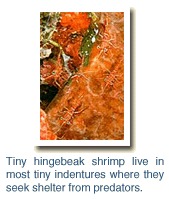
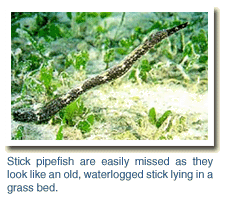
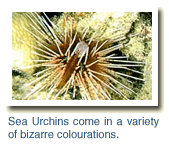
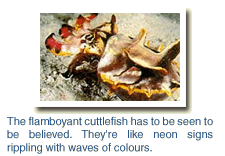
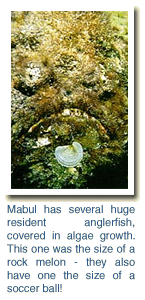
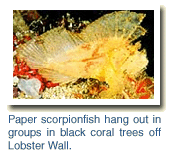 Different sites are known for different animals. If you want to see a paper scorpionfish, then your guide will take you to Lobster Wall which is also great for nudibranchs and shrimp. If you can't live until you've seen a Mandarin fish, then off you go to Mandarin Valley which is also home to the some resident ghost pipefish and a black anglerfish the size of a rock melon. The Flamboyant cuttlefish lives at Froggy Lair along with two blue anglerfish (often referred to as frogfish) the size of soccer balls. Crocodile Avenue is a huge grass bed with heaps of huge crocodile fish, sea horses, sea moths (or pegasus fish), pipefish and snake eels.
Different sites are known for different animals. If you want to see a paper scorpionfish, then your guide will take you to Lobster Wall which is also great for nudibranchs and shrimp. If you can't live until you've seen a Mandarin fish, then off you go to Mandarin Valley which is also home to the some resident ghost pipefish and a black anglerfish the size of a rock melon. The Flamboyant cuttlefish lives at Froggy Lair along with two blue anglerfish (often referred to as frogfish) the size of soccer balls. Crocodile Avenue is a huge grass bed with heaps of huge crocodile fish, sea horses, sea moths (or pegasus fish), pipefish and snake eels.
But don't think that each site only has one or two attractions. While there are reasons to visit each area, you'll be encountering amazing animal after amazing animal throughout your dive. Non-photographers will find that they fill their slates with species long before the dive is over and the biggest problem for photographers is rationing their film.
Muck divers have it particularly good on Mabul. Limited numbers is probably a good idea anyway. Most dive sites are either solid coral reefs sloping down to a silty bottom or a silty slope speckled with clumps of coral outgrowths. Visibility is never endless although it is usually at least 12 metres, but the silt gets kicked up easily which reduces visibility even more and makes photography difficult.
All diving activities and dive dites will be arranged at the discretion of the resort management.
| « Muck Diving :Previous | Next: Mabul and Smart Divers Resort » |

















